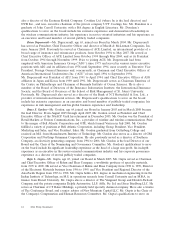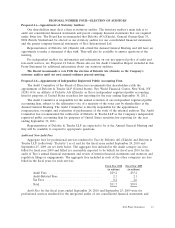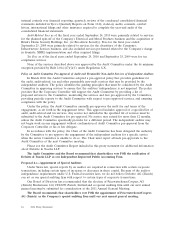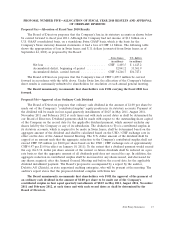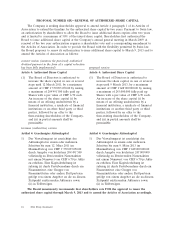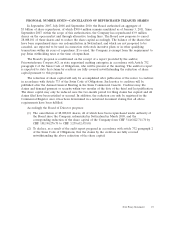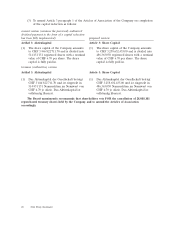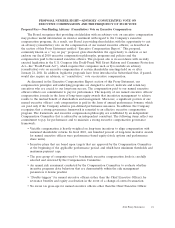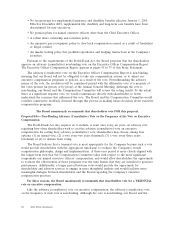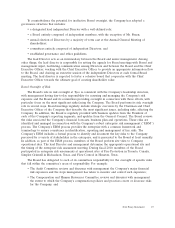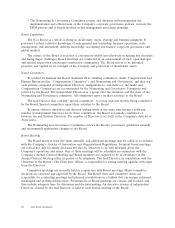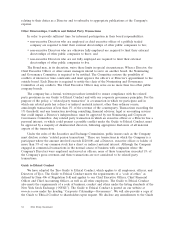ADT 2010 Annual Report Download - page 30
Download and view the complete annual report
Please find page 30 of the 2010 ADT annual report below. You can navigate through the pages in the report by either clicking on the pages listed below, or by using the keyword search tool below to find specific information within the annual report.• No tax gross-ups for supplemental insurance and disability benefits effective January 1, 2010.
Effective December 2010, supplemental life, disability and long-term care benefits have been
discontinued for new executives.
• No pension plans for named executive officers other than the Chief Executive Officer.
• A robust share ownership and retention policy.
• An expansive pay recoupment policy to claw back compensation earned as a result of fraudulent
or illegal conduct.
• An insider trading policy that prohibits speculative and hedging transactions in the Company’s
securities.
Pursuant to the requirements of the Dodd-Frank Act, the Board proposes that the shareholders
approve an advisory (consultative) non-binding vote on the Executive Officer Compensation Report.
The Executive Officer Compensation Report appears at pages 43 to 75 of this Proxy Statement.
The advisory (consultative) vote on the Executive Officer Compensation Report is non-binding,
meaning that our Board will not be obligated to take any compensation actions, or to adjust our
executive compensation programs or policies, as a result of the vote. Notwithstanding the advisory
nature of the vote, the resolution will be considered passed with the affirmative vote of a majority of
the votes present (in person or by proxy) at the Annual General Meeting. Although the vote is
non-binding, our Board and the Compensation Committee will review the voting results. To the extent
there is a significant negative vote, we would communicate directly with shareholders to better
understand the concerns that influenced the vote. The Board and the Compensation Committee would
consider constructive feedback obtained through this process in making future decisions about executive
compensation programs.
The Board unanimously recommends that shareholders vote FOR this proposal.
Proposal 8(b)—Non-Binding Advisory (Consultative) Vote on the Frequency of the Vote on Executive
Compensation.
The Dodd-Frank Act also requires us to include, at least once every six years, an advisory vote
regarding how often shareholders wish to cast the advisory (consultative) vote on executive
compensation. In casting their advisory (consultative) vote, shareholders may choose among four
options: (1) an annual vote, (2) a vote every two years (biennial), (3) a vote every three years
(triennial) or (4) to abstain from voting.
The Board believes that a triennial vote is most appropriate for the Company because such a vote
would provide shareholders with the appropriate timeframe to evaluate the Company’s overall
compensation philosophy, design and implementation. A three-year period is more closely aligned with
the longer-term view that the Compensation Committee takes with respect to the more significant
components our named executive officers’ compensation, and would allow shareholders the opportunity
to evaluate the effectiveness of these programs over the time frames that they are intended to generate
performance. Additionally, a longer period between votes would provide the opportunity for
shareholders and advisory services to engage in more thoughtful analysis and would facilitate more
meaningful dialogue between shareholders and the Board regarding the Company’s executive
compensation practices.
For these reasons, the Board unanimously recommends that shareholders vote for a TRIENNIAL
vote on executive compensation.
Like the advisory (consultative) vote on executive compensation, the advisory (consultative) vote
on the frequency of such vote is non-binding. Although the vote is non-binding, our Board and the
22 2011 Proxy Statement


